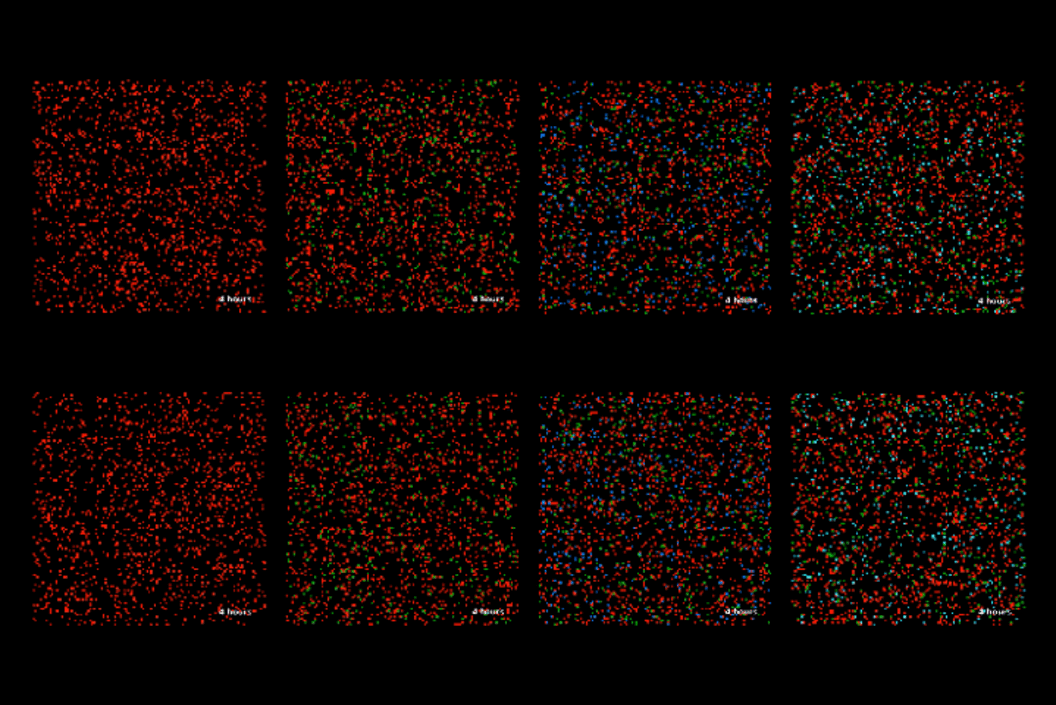Click the image below to view the animated version of this
cover.

Created by: Maisa van Genderen, Federica Eduati
Issue 292: Androgen deprivation therapy (ADT) for prostate cancer targets the androgen signaling pathway within tumor cells to impede cancer cell proliferation. However, recent findings indicate that the androgen pathway plays crucial roles in other cells within the tumor microenvironment, making them susceptible to ADT effects. To study this, we have developed an agent-based model that integrates current knowledge of ADT's impact on tumor cells (depicted in red in the simulation), cancer-associated fibroblasts (green), and both M1 (dark blue) and M2 type (light blue) macrophages. By simulating the presence (upper row) or absence (bottom row) of androgen, we uncover how ADT influences the dynamics of these cellular players in the tumor microenvironment, shedding light on tumor response and resistance mechanisms. Our model effectively mirrors established effects of ADT, including relevant spatial cellular patters, and predicts its potential to induce immunomodulatory responses in macrophages, which can cause enhanced patient survival. See tweet thread on the paper.
